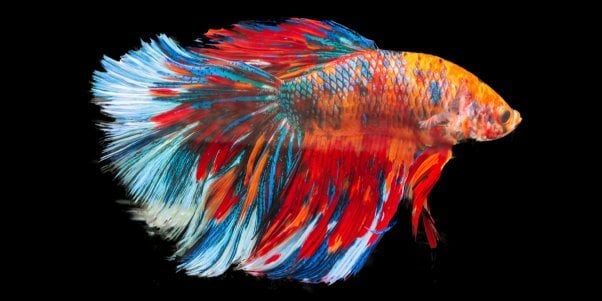The Ultimate Betta Fish Care Overview for New Pet Dog Owners
The Ultimate Betta Fish Care Overview for New Pet Dog Owners
Blog Article
Reproducing Betta Fish: a Comprehensive Step-By-Step Overview to Efficiently Raising Baby Bettas From Eggs to The Adult Years
Reproducing Betta fish is a thorough endeavor that requires careful planning and execution to make sure the effective growth of fry from eggs to mature fish. As the male Betta diligently constructs a bubble nest and guards the valuable eggs, the subsequent phases of treatment and transition demand interest to detail and expertise of best practices.

Selecting Breeding Pairs
When embarking on the journey of breeding Betta fish, picking the right reproduction sets is vital to attaining preferable traits and a healthy lineage - betta fish. The initial step in this procedure is to identify the details qualities you desire to boost or protect, such as shade, fin kind, and body shape. It is important to select genetically varied pairs to stay clear of inbreeding, which can result in wellness issues and unwanted qualities
Evaluate prospective reproducing candidates carefully. A healthy and balanced male Betta should show dynamic shades, an active demeanor, and well-formed fins, while the woman should likewise present dynamic coloration and a rounded stubborn belly, suggesting preparedness for spawning. Observing the temperament of both fish is essential, as hostile or overly timid people might not breed effectively.
Documentation of family tree is equally essential. Maintaining documents of the moms and dad fish's ancestry can assist you track hereditary attributes and potential problems. Furthermore, consult reputable breeders or on the internet sources for advice on picking compatible pairs. Eventually, investing time in the option procedure will significantly enhance the possibility of generating solid, vibrant offspring that satisfy your breeding objectives (betta fish).

Preparing the Breeding Tank
Developing an optimum reproduction environment is a key action after selecting ideal sets for Betta fish. The breeding container ought to be especially created to provide convenience and promote the natural reproduction behaviors of the fish. Beginning with a storage tank size of at the very least 10 gallons to guarantee sufficient space for both the man and female Bettas.
Preserve a gentle filtering system to keep the water clean while staying clear of strong currents that can emphasize the fish. Furthermore, an air rock can be included in supply oxygenation without disrupting the water surface area way too much.
Temperature guideline is essential; purpose for a stable series of 78-82 ° F(25-28 ° C) using a trusted heater. The pH degree need to be maintained between 6.5 and 7.5, and normal water changes are needed to make certain high water quality.
Integrate drifting plants or generating mops to produce concealing spots for the woman, while likewise urging bubble nest building by the male - betta fish. Lastly, make sure the container is cost-free from sharp decorations and any type of potential hazards, as the welfare of the fish should always be focused on throughout this critical phase of breeding.
The Breeding Process
Commonly, the reproducing procedure for Betta fish entails a collection of distinctive and visible actions that show preparedness for reproduction. The male Betta begins by building a bubble nest at the water's surface, which offers as a website for the fed eggs. This nest is critical, as it provides a safe environment for the eggs till they hatch.
Once the nest is established, the male will certainly present courtship actions, such as flaring his fins and showing vivid shades to draw in the female. The female, upon sensing the male's preparedness, will certainly react by showing vertical red stripes along her body, signifying her receptiveness.
The fertilized eggs after that fall to the bubble nest, where the male meticulously gathers and returns them to the nest. Following this, the male assumes duty for protecting the nest and making certain the security of the eggs until they hatch, typically within 24-36 hours.
Taking Care Of Betta Fry
Caring for Betta fry requires careful interest to their atmosphere and nutrition to make sure healthy and balanced development and development. After hatching, Betta fry are very tiny and vulnerable, necessitating a steady and tidy environment.
Feeding Betta fry is equally important. Feed them small amounts several times a day, being mindful not to overfeed, which can lead to water top quality concerns.
Transitioning to Adult Bettas
As Betta fry mature, transitioning them to adult Bettas is an important phase that requires careful management of their setting and social communications. This process usually begins when the fry reach around 6 weeks old, whereupon they can be slowly introduced to an extra structured living environment.
To promote this transition, it is crucial to make sure that the water parameters-- such as temperature level, pH, and ammonia levels-- are optimum and stable. Grown-up Betta fish thrive in cozy water (around 78-80 check my reference ° F) with a pH of 6.5 to 7.5. Gradually adapt the fry to these conditions to lessen stress.
Social communications are another crucial factor; male Bettas are infamously territorial and read the full info here aggressive. It is suggested to separate males right into specific tanks as they develop. Female Bettas can be housed together, however treatment should be taken to check for indications of aggressiveness.
Additionally, nutritional modifications should be made as the fry grow. Include high-grade pellets and live foods to sustain their growth and wellness. By managing these elements successfully, you can advertise an effective transition to adulthood for your Betta fish.

Verdict
Successful click to read more reproduction of Betta fish needs mindful interest to detail throughout the entire procedure, from choosing genetically varied pairs to giving ideal treatment for fry. Furthermore, a balanced diet plan and gradual adaptation to grown-up atmospheres are crucial for the development and growth of Betta fish.
Report this page